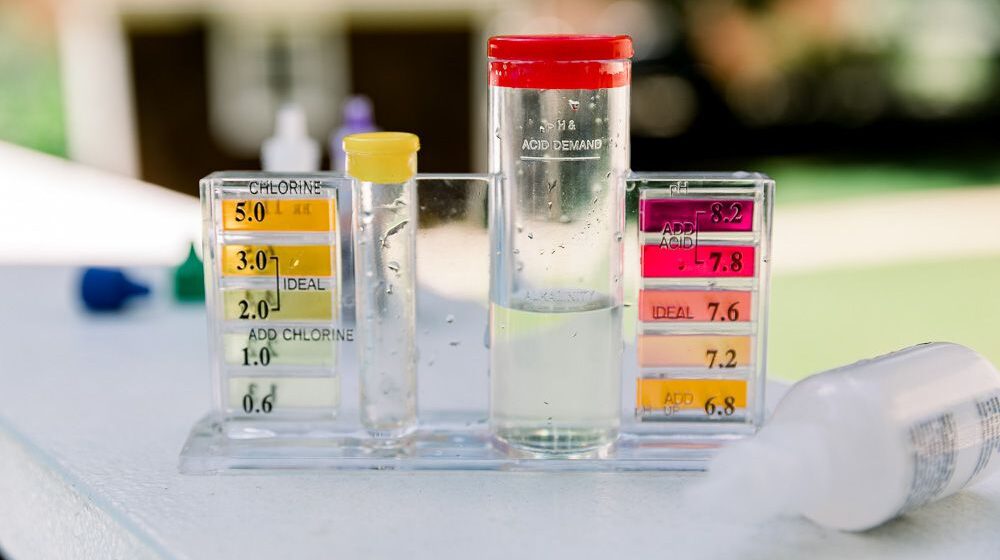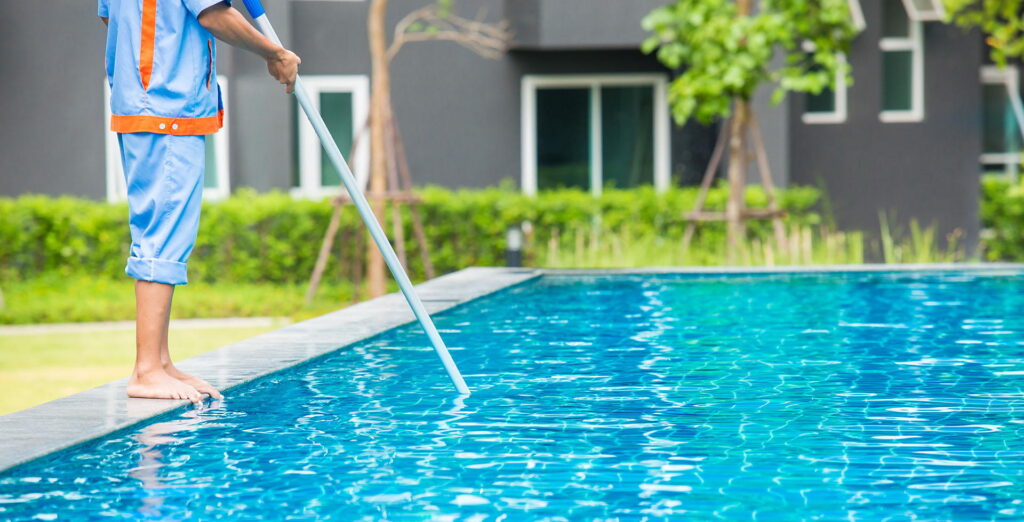Table of Contents
Calcium hardness is a persistent problem among many pool owners. It is a critical point to take care of due to the health hazards there are when you don’t maintain the pool amiably. High calcium hardness will corrode your pool and plumbing.
If you’re beginning to notice whitish residue in the pool tiles and rusty interiors of the pipework, then consider checking the calcium hardness of the pool. The measure of hardness is in PPM units. If the water reads the calcium hardness as greater than 440PPM, then read on to find out how you can lower this hardness.
How to Lower Calcium Hardness in Pools
There are many ways to detect and correct calcium hardness in pools. It always starts with finding out just how much your water is measuring and what ways are there to treat it properly.
Test the Water
The first and foremost step to correcting calcium hardness is to find out just how much content of it is there in the pool. There are pool kits that are available for this testing, which provide accurate results.
The tests also provide pH, alkalinity, chlorine levels, etc., which you can determine easily by this testing. The results can help determine how hard the water is, and this can help to treat your pool.

Replacing the Water
One of the most fool proof ways to reduce calcium hardness in water is by replacing the existing water in the pool.
It’s not advisable to remove all of the water from the pool. It tends to affect the foundation of the pool and causes balance problems in it. If the value of the calcium hardness is too high, you are better off by removing parts of the water since calcium is present in part per million (PPM) units.
Removing and Cleaning
Your local water and pool services in-charge would be an ideal person to talk to about estimating what to do. Before you reduce the water level, be sure to clean or vacuum out the residue or any deposits.
You can remove this water by either siphoning or backwashing it. You can do this using a hose or a pump to suction water from the discharge end. You’re not draining all the water; you’re only removing 4-6 inches of the water from its original height.
Refill and Retest
After you’ve removed the parts of water concerning the amount of calcium hardness is present, you can now start replacing it with fresh water. Take a clean garden hose and a spigot and start pushing water into the pool. The freshwater will dilute the calcium levels.
After this is done, wait for 12 hours to test the water for its calcium hardness. This can be done using pool kits and the like, which are as easily available as muriatic acid in pool service stores.

Additive and Flocculants
Flocculants are sequestering agents that tend to correct extremely high levels of calcium in your water. If you are unable to remove water from your pool, then this method will be beneficial.
Flocculant is a chemical additive that helps in bundling up the calcium in the water. This process makes clumps of calcium appear and float on the surface, which can then be manually removed or vacuumed.
Warnings on when to Use Flocculants
Free-floating calcium that is not already dissolved in the water can easily be removed using flocculants.
It is better to clean the pool before you add the agent to the water. This is necessary because scrubbed calcium is chipped away when the pool is cleaned. All the unnecessary calcium and its harmful deposits are then crumpled away when the water is vacuumed.
Always turn your filter/pump off when using flocculant in the water. You do not want the vacuum filter to be replaced due to floc sediments found in the filter. Additionally, if you use a cartridge filter, do not use a flocculant.
How to Use Flocculants
- Clean the pool and the pipes by scrubbing the pool interior or backwashing the pipes. It removes all the unnecessary calcium residue and rust in them.
- Use a flocculant and wait for the calcium to bundle up in the pool for you to remove
- Once removed, drain some of the water and refill with fresh water, just in case.
- After six hours, test the water for its hardness.
Lowering the Alkalinity
The ideal alkalinity level of water should be in the range of 80-120. If the calcium levels still show imbalance, you need to lower them using muriatic acid. This is particularly useful for those who cannot follow the method of correcting calcium hardness by replacing pool water.
Muriatic acid tends to help lower the hardness adequately by leveling out the saturation of the pool. This acid is easily available in all maintenance stores or online shops. Add 2-3 cupfuls of muriatic acid to bring down the alkalinity. Wait for 12 hours before testing the alkalinity again.
Do keep in mind that this method is usually the last resort of correcting calcium hardness.
As you have noted, muriatic acid only levels the saturation but does not correct the pH or alkalinity. If do not add the correct amount, it may make the water corrosive and disrupt its balance too.
Getting guidance from your local pool provider is advisable because they will be able to guide you better through the process.

Maintain the Pool
This step is essential, despite or not, you live in a place where hardness is a persistent issue. Not only does consistent checking and healthy maintenance help the pool’s health, but it also reduces damages as costs.
Test the calcium levels every 2-3 months. If you live in an area where calcium hardness is an issue, then test the water every three weeks. Refrain from testing the water all the time, though. Calcium levels are always fluctuating, and not all changes are alarming.
One best way to maintain the pool is by learning how to detect the calcium concentration in the pool. If the water looks cloudy or if there’s a white film-like substance you find floating in the water or corners, take your testing kits out.
Brush the pool and remove the debris every once or twice a week. Natural causes do bring calcium changes in the pool. Wear gloves while you are handling these chemicals.
Summary
Calcium hardness is a common issue with pools. It is never anything very alarming, though it is always preferable to keep the pool healthy. Your effort in maintaining it now will pay you back in the long run.
